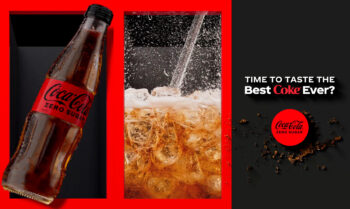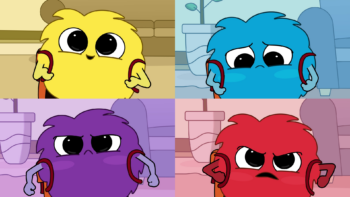
Gradually, more brands are seeing the value of personalised content. Why? Because they know their customers care. 73% of customers expect companies to understand their needs and expectations, and more than half would rather buy from a retailer that knows them by name. The value of personalised content is that it shows your customers you care.
“This isn’t just another buzz term doing the rounds at marketing conferences and tech shows,” says Aaron Brooks from Venture Harbour, “this is one of the trends that matter most to the people you want on your customer list.” Customers see the value of personalised content and it’s time brands started to care too.
What is personalisation?
Personalisation, put simply, refers to the practice of tailoring the individual’s customer experience to them. Being referred to by name presenting information relevant to them and honing in on their preference are all examples of personalisation. When Amazon greets you by name and recommends products based on your purchase history, that’s personalisation in practice.
Personalised content can do just the same. New technology can combine data with a multimedia experience that addresses the viewer by name, and includes content relevant to them. Thousands upon thousands of videos, for example, can be made, each unique to a different customer.
Above: This personalised video was produced for the Western Bulldogs to encourage members of the football club to renew their lapsed membership for the new season.
How does it differ from interactive video?
Personalised video is often confused with interactive video. It’s understandable why. Both formats create tailored experiences unique to the viewer, but do so in different ways.
Personalised video requires information about the viewer collected prior to them watching the video. For instance, their name, age and date of birth might personalise a video wishing them a ‘Happy Birthday’. The video might include their name, the age that they’re turning and be sure to mail it to them on their actual birthday. For the viewer, it is a passive experience where the information specific to then is presented.
Interactive video, on the other hand, invited the viewer to interact with the video and might collect information about them during the video. Clickable/tappable buttons appear within interactive videos, built right into its video player, allowing users to click links, or make decisions that change the direction of the video, much like a choose-your-own-adventure book or movie (like Netflix’s Bandersnatch).
Above: This video includes both personalised and interactive elements. The names and course are personalised, but the ‘Accept Now’ button is an interactive element.
Rather than using already available information, the video might asks the viewer questions as it goes. For example, the first scene might play out before clickable buttons contained within the video player ask you to choose the kind of music you like, e.g. hip hop or rock. From that point on, the video could include music that matches your choice.
Commonly, videos contain elements of both. Such things like car insurance membership updates might include personalised elements, addressing the viewer by name, include the cost of their quote and their vehicle registration. It might then include interactive elements, presenting a button at the end of the video that takes them to a webpage to change their policy details.
What is the value of personalised content?
According to KPMG, personalisation involves “using individualised attention to drive an emotional connection.” When we’re addressed by name and information is provided to us that specifically addresses our interests, it resonates with us. Brands utilising personalised content are establishing emotional connections with their customers. Subsequently, they’re building brand loyalty and equity.
In the attention economy, where millions of bits of content and communications are competing for your customer’s attention, personalisation exhibits the Cocktail Party Effect. Not heard of it? The effect was first described by the researcher Colin Cherry. It explains that in a noisy environment, like a cocktail party, we’re only able to tune into relevant information. Generally, someone shouting our name acts as a good trigger. But personalised content needs to go further than that.
Don’t skimp on the details
An enriching customer experience comes from leveraging more of your customer-specific data. According to Jennifer Clinehens, author of Choice Hacking: How to use psychology and behavioral science to create an experience that sings, ‘true personalisation’ involved deeply understanding your customer’s journey.
Accenture reports that personalisation should involve:
- recognising the customer by name
- knowledge of the customer’s history
- predicting what the customer’s needs will be in the future
Above: This member retention video contains both personalised and interactive elements, with the viewer’s name and membership length and a clickable call-to-action at the end.
Your brand communications should do the same at every touchpoint. Moreso, you should be upfront in doing so. If information from your customer is going to benefit their experience, be upfront and transparent about it. Research by Salesforce shows that most online buyers will happily exchange personal data for personalised offers and discounts, and say a personalised experience is important when buying from a company.
How we can help
Creating a personalised customer experience starts with your communications. At Creativa, we’re passionate about the power of video.
Our award-winning, in-house video production and animation team can produce videos for your brand that we can then personalise and make unique for your customers using our personalised video platform. Host the videos on your website, send them to your customers or include them in your app, whatever you choose. Our videos are made for you and your brand.
Learn more about our personalised video here.




